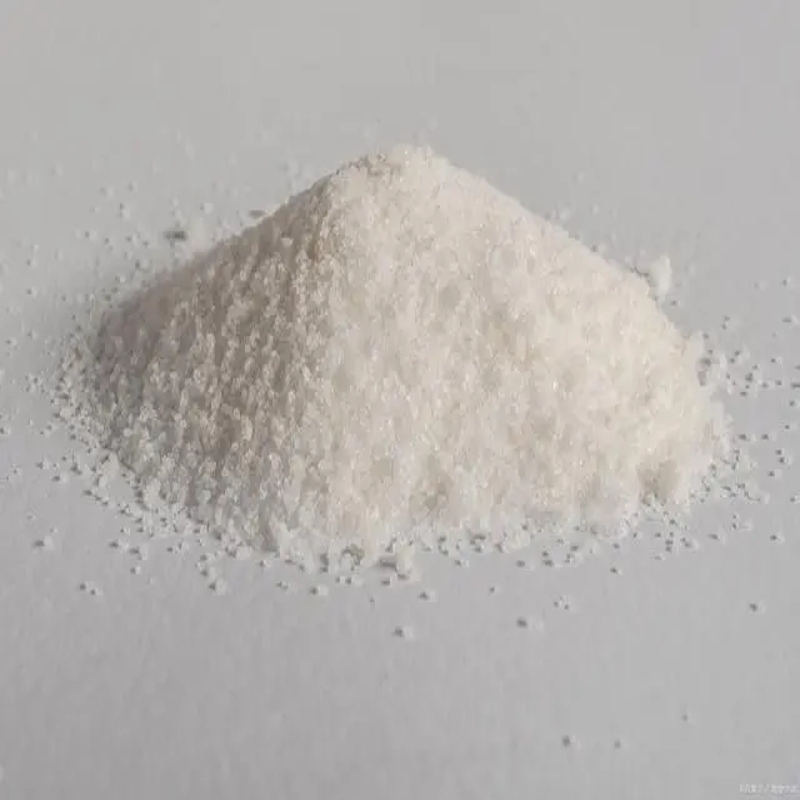-
Categories
-
Pharmaceutical Intermediates
-
Active Pharmaceutical Ingredients
-
Food Additives
- Industrial Coatings
- Agrochemicals
- Dyes and Pigments
- Surfactant
- Flavors and Fragrances
- Chemical Reagents
- Catalyst and Auxiliary
- Natural Products
- Inorganic Chemistry
-
Organic Chemistry
-
Biochemical Engineering
- Analytical Chemistry
- Cosmetic Ingredient
-
Pharmaceutical Intermediates
Promotion
ECHEMI Mall
Wholesale
Weekly Price
Exhibition
News
-
Trade Service
On January 14, 2016, Japan's New Energy Industry Technology Development Organization (NEDO) announced that it had developed a new carbon fiber production technology
.
The carbon fiber produced can be used not only in automobiles, but also in aerospace, aircraft and industrial equipment
.
The technology was jointly developed
by the Japan New Energy Industry Technology Development Agency, the University of Tokyo, the Advanced Industrial Science and Technology Research Institute, Toray, Teijin, and Teijin's subsidiary Toho Tenax and Mitsubishi Rayon.
It is reported that the productivity of the new technology is 10 times higher than the original, and the energy required for production and the carbon dioxide emissions produced have been reduced by half
.
Because of its light weight, high strength and long life, carbon fiber can be used in aviation aircraft and automobiles
.
The raw material is carbon fiber of polyacrylonitrile, which is expected to grow at an annual rate of 15%
by 2020.
Carbon fiber is Japan's leading industry, accounting for 65%
of the global market share.
With the increase in fuel costs and the reduction of environmental burden, carbon fiber is gradually applied to conveying equipment
.
In recent years, carbon fiber has been applied to Boeing Aviation aircraft "Boeing 787", Lexus "LFA", BWM "i3", "i8", wind power blades and so on
.
Demand for carbon fiber increased, but due to long production times and high energy consumption, it could not fully meet the amount
supplied by the increased demand.
Now, the annual production of carbon fiber reaches tens of thousands of tons
.
The production cost of carbon fiber is very high, it is reported that the production of carbon fiber in 2012 is 40,000 tons, and the price is about
5,000 yen/kg.
When it is to be used in large quantities in automobiles, a minimum of more than 100,000 tons of carbon fiber
must be produced.
Therefore, it is very urgent
to develop production technology to improve the productivity of carbon fiber.
The new production technology eliminates the need for corrosion resistance by
developing new polymers as raw materials for carbon fiber.
In the first stage of the production of carbon fiber, the corrosion resistance process
is completed.
Kazuro Kageyama, a professor at the graduate school of engineering at the University of Tokyo, said this was the world's first research result
.
In addition, solvent-soluble aromatic polymers
are developed.
This raw material is easier to carbonize than the original product, which is conducive to the production
of carbon fiber products with a coarser diameter.
If carbon fiber can be coarsely produced, the yield is increased accordingly and contributes to
the improvement of production performance.
The carbonization process is also shortened, greatly simplifying the production process
.
As a result, through the development of new polymers, three new technologies, namely microwave heating and surface treatment by plasma, energy consumption and CO2 emissions during production have been halved, and production has increased by more than
10 times.
Specifically, the annual output of carbon fiber per production line will increase from 2,000 tons to more than
20,000 tons.
The energy required for carbon fiber production will be reduced from 286 MJ/kg to 140 MJ/kg
.
CO2 emissions from producing 1 kg of carbon fiber will be reduced from 22 kg to less than
11 kg.
Using the new production technology, the elasticity of carbon fiber reaches 240Gpa, the strength is 3.
5Gpa, and the elongation is 1.
5%.
This is lower than the carbon fiber performance offered by domestic manufacturers
.
However, its performance and industrial products are very well matched and can be used on
aviation aircraft.
Europe and the United States are also promoting the research and development of carbon fiber products, but if the cost is preferred, the performance will be set at an elasticity rate of less than 200Gpa, and a strength lower than 3Gpa
.
The performance of the carbon fiber product developed by the Japan New Energy Industry Technology Development Organization is set at an elasticity rate of more than 235 Gpa, and the elongation is set at more than
1.
5%.
This is a high target compared to overseas research projects
.
However, this carbon fiber produced by "solvent-soluble flame-resistant polymer" achieves this goal
.
The establishment of new production technologies is expected to accelerate the mass production of carbon
fibers.
In the future, in addition to further improving performance, we will further promote the practical application of
carbon fiber production technology.
,
On January 14, 2016, Japan's New Energy Industry Technology Development Organization (NEDO) announced that it had developed a new carbon fiber production technology
.
The carbon fiber produced can be used not only in automobiles, but also in aerospace, aircraft and industrial equipment
.
The technology was jointly developed
by the Japan New Energy Industry Technology Development Agency, the University of Tokyo, the Advanced Industrial Science and Technology Research Institute, Toray, Teijin, and Teijin's subsidiary Toho Tenax and Mitsubishi Rayon.
It is reported that the productivity of the new technology is 10 times higher than the original, and the energy required for production and the carbon dioxide emissions produced have been reduced by half
.
Because of its light weight, high strength and long life, carbon fiber can be used in aviation aircraft and automobiles
.
The raw material is carbon fiber of polyacrylonitrile, which is expected to grow at an annual rate of 15%
by 2020.
Carbon fiber is Japan's leading industry, accounting for 65%
of the global market share.
With the increase in fuel costs and the reduction of environmental burden, carbon fiber is gradually applied to conveying equipment
.
In recent years, carbon fiber has been applied to Boeing Aviation aircraft "Boeing 787", Lexus "LFA", BWM "i3", "i8", wind power blades and so on
.
Demand for carbon fiber increased, but due to long production times and high energy consumption, it could not fully meet the amount
supplied by the increased demand.
Now, the annual production of carbon fiber reaches tens of thousands of tons
.
The production cost of carbon fiber is very high, it is reported that the production of carbon fiber in 2012 is 40,000 tons, and the price is about
5,000 yen/kg.
When it is to be used in large quantities in automobiles, a minimum of more than 100,000 tons of carbon fiber
must be produced.
Therefore, it is very urgent
to develop production technology to improve the productivity of carbon fiber.
The new production technology eliminates the need for corrosion resistance by
developing new polymers as raw materials for carbon fiber.
In the first stage of the production of carbon fiber, the corrosion resistance process
is completed.
Kazuro Kageyama, a professor at the graduate school of engineering at the University of Tokyo, said this was the world's first research result
.
In addition, solvent-soluble aromatic polymers
are developed.
This raw material is easier to carbonize than the original product, which is conducive to the production
of carbon fiber products with a coarser diameter.
If carbon fiber can be coarsely produced, the yield is increased accordingly and contributes to
the improvement of production performance.
The carbonization process is also shortened, greatly simplifying the production process
.
As a result, through the development of new polymers, three new technologies, namely microwave heating and surface treatment by plasma, energy consumption and CO2 emissions during production have been halved, and production has increased by more than
10 times.
Specifically, the annual output of carbon fiber per production line will increase from 2,000 tons to more than
20,000 tons.
The energy required for carbon fiber production will be reduced from 286 MJ/kg to 140 MJ/kg
.
CO2 emissions from producing 1 kg of carbon fiber will be reduced from 22 kg to less than
11 kg.
Using the new production technology, the elasticity of carbon fiber reaches 240Gpa, the strength is 3.
5Gpa, and the elongation is 1.
5%.
This is lower than the carbon fiber performance offered by domestic manufacturers
.
However, its performance and industrial products are very well matched and can be used on
aviation aircraft.
Europe and the United States are also promoting the research and development of carbon fiber products, but if the cost is preferred, the performance will be set at an elasticity rate of less than 200Gpa, and a strength lower than 3Gpa
.
The performance of the carbon fiber product developed by the Japan New Energy Industry Technology Development Organization is set at an elasticity rate of more than 235 Gpa, and the elongation is set at more than
1.
5%.
This is a high target compared to overseas research projects
.
However, this carbon fiber produced by "solvent-soluble flame-resistant polymer" achieves this goal
.
The establishment of new production technologies is expected to accelerate the mass production of carbon
fibers.
In the future, in addition to further improving performance, we will further promote the practical application of
carbon fiber production technology.
,







